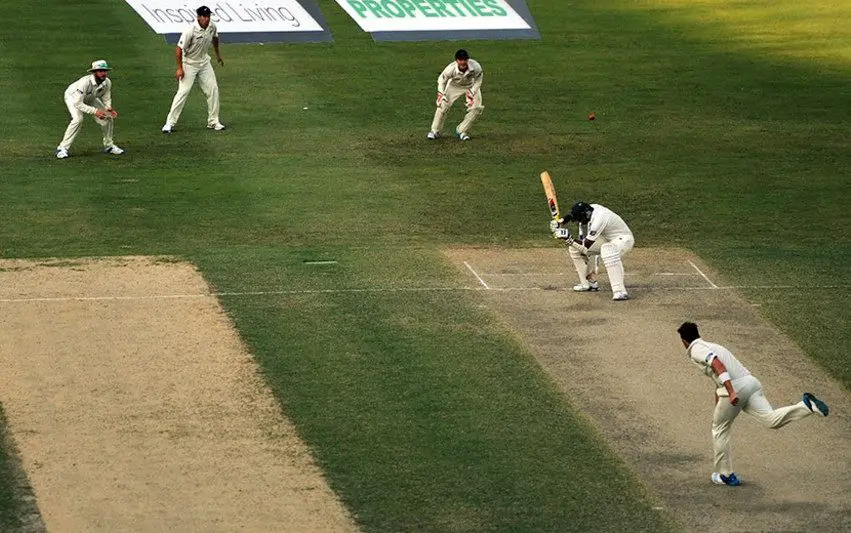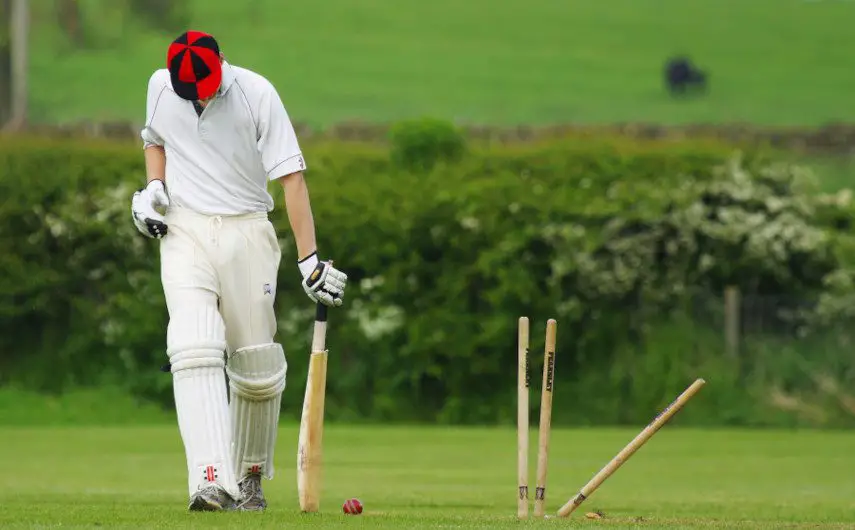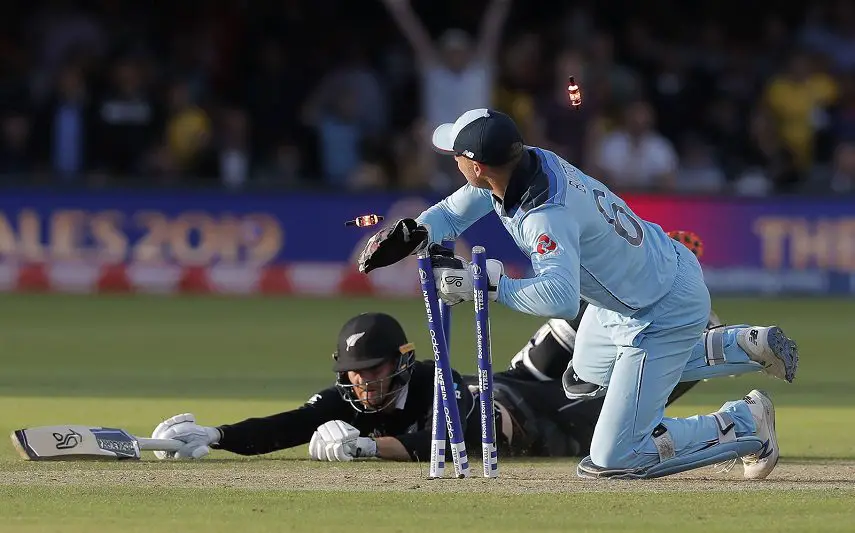Table of Contents
Bouncers can be an effective weapon for pace bowlers but there are laws in place to restrict their use. In this article, I will answer the question relating to the number of bouncers that can be used in an over.
How Many Bouncers Are Allowed in An Over?
Laws relating to bouncers differ depending on the form of the game. In test matches and other forms of first class cricket, two bouncers are allowed in each over.
In ODI cricket, two bouncers are allowed in each over. In T20 matches, only one bouncer is permissible in an over.

Differences in Laws on Bouncers Between Different Forms
Test Cricket

In test matches and in all first class cricket matches, two bouncers per over are allowed. This is the longest form of the game, and it’s acceptable for a bowler to use more short pitched deliveries without straying into the realms of intimidation. The length of the game is key here, and it’s all about striking a good balance between bat and ball. If the bowler has only one bouncer, they have less scope for variation. This could potentially lead to games where batsman have a bigger advantage, and we could end up with more high-scoring boring draws.
ODI

One Day International cricket has seen the highest number of changes in relation to bouncers. When the law was initially brought in, in 1994, only once bouncer per over was allowed.
There was, however, a change to that particular law in 2012 and, since that point, up to two bouncers per over are permitted in ODI cricket. Once again, this makes sense when put in context. This is a one-day game, but batting sides get a maximum of 50 overs, so we still have that need for balancing the bat and the ball.
T20

Bouncers can be seen as a negative tactic. The batter’s first instinct is to protect themselves, rather than score runs from the delivery.
T20 cricket is the shortest form of the game and there is more of an emphasis on batting here. The batters will look to score heavily from the first ball, and everyone involved, with the exception of the bowlers, wants to see big runs. That’s why only one bouncer is allowed in a T20 over.
There are, however, some exceptions to this rule. We’ve seen in T20 franchise cricket around the world that some leagues like to tinker with the laws. In the Indian Premier League, the current legislation at the time of writing states that up to two bouncers per over are permitted.
Bouncer No Ball Rule in Cricket
When related to bouncers, no balls can be called in two different sets of circumstances. Under law 21.10, a no ball shall be called if a bouncer passes over the head height of a batter. The measurement is an assumed one, based on that batter standing up in the popping crease.
That’s a law for one-off bouncers but no balls can also be called when the laws on the restriction of bouncers are broken.
Rules When the Maximum Number of Bouncers is Exceeded
No balls will also be called when a bowler has exceeded the legal number of deliveries allowed in an over.
In test match cricket and other first class games, a no ball would therefore be called on the third bouncer. There is no free hit law in test matches at present so there would simply be an extra run added to the batting team’s total, and the bowler would have to bowl that delivery again.
In ODI cricket, a no ball would also be called if the bowler sends down a third bouncer in the over. In this instance, two runs are added to the batting team’s total. The ball will need to be delivered again and this time the batter has a free hit.
A free hit means that the batter cannot be given out by most of the dismissal methods including Bowled, Caught and LBW. The exceptions to this law are Run Out and Obstructing the Field.
In T20 cricket, the rules are similar to that of ODIs. The only difference lies in the number of bouncers that are allowed. In this form of the game, a second bouncer in the same over will lead to the umpire calling a no ball.
Once again, two runs are added to the batting team’s score. An extra ball must be bowled and the follow up delivery will be a free hit. Remember that some tournaments will allow bowlers to deliver two bouncers. In these cases, the no ball should therefore be called when a third bouncer is sent down.
What is the Definition of a Bouncer?
Under the laws of the game, a bouncer is defined as a short pitched delivery that reaches the batter at head height. The ball has to bounce once, and if it doesn’t bounce, it is considered as a beamer.
There are separate laws relating to beamers which are especially dangerous. If a bowler delivers two beamers in an innings, they should be withdrawn from the attack by the umpires.
As for bouncers, we’ve seen how many of these are permitted in each over, depending on the format of the game. If the bowlers exceeds that amount, a no ball should be called. Similarly, if the ball passes clearly above head height, this should also be called as a no ball.
In terms of the head height rule, the umpires need to judge this. If the ball reaches the batter below head height, this is a regular delivery and no action is needed. The square leg umpire has the best view, but often, when the match is televised, this decision will be referred to the third umpire.
This is why we see teams push the boundaries at times. On occasions, sides may deliver a barrage of short pitched bowling, and spectators will wonder why the umpires aren’t taking any action. The likely reason is that the umpires don’t consider every delivery as a bouncer, so the bowling side continue with this approach until they take a wicket or they get bored with trying.
Why are the Laws Different for Certain T20 Tournaments?
T20 competitions that have a two-bouncer law will do this for different reasons. Perhaps they believe that the bowler should have more weaponry in a format where the batters have more of an advantage. Under the one bouncer rule, if a bowler uses that bouncer on the first or second delivery, the rest of the over will be predictable. The batter knows that they have to pitch the ball up, and in theory the next few deliveries will be easier to play.
Organisers may have other reasons for allowing the second bouncer and each will take their own approach to the decision. It’s a way of standing out from the rest of the game, but others will argue that cricket’s laws should be uniform around the world.
Conclusion
A bouncer can certainly be an effective weapon in any form of cricket, but nobody wants to see it overused. In test matches, we’ve probably all watched passages of play where the bowlers are sending down many short pitched deliveries and the batters are simply getting out of the way. These are negative tactics and often used when the pitches are flat and the batsmen are on top.
Overuse of the bouncer can lead to boring cricket, but there is also the question of intimidation. For the sake of the batter’s safety, bouncers should be kept to a sensible level and that’s the main reason why these laws have been introduced.
It’s all about common sense and striking a balance. There is a danger with bouncers, and there have been serious injuries and deaths on the cricket field, and that’s something that nobody wants to see.


